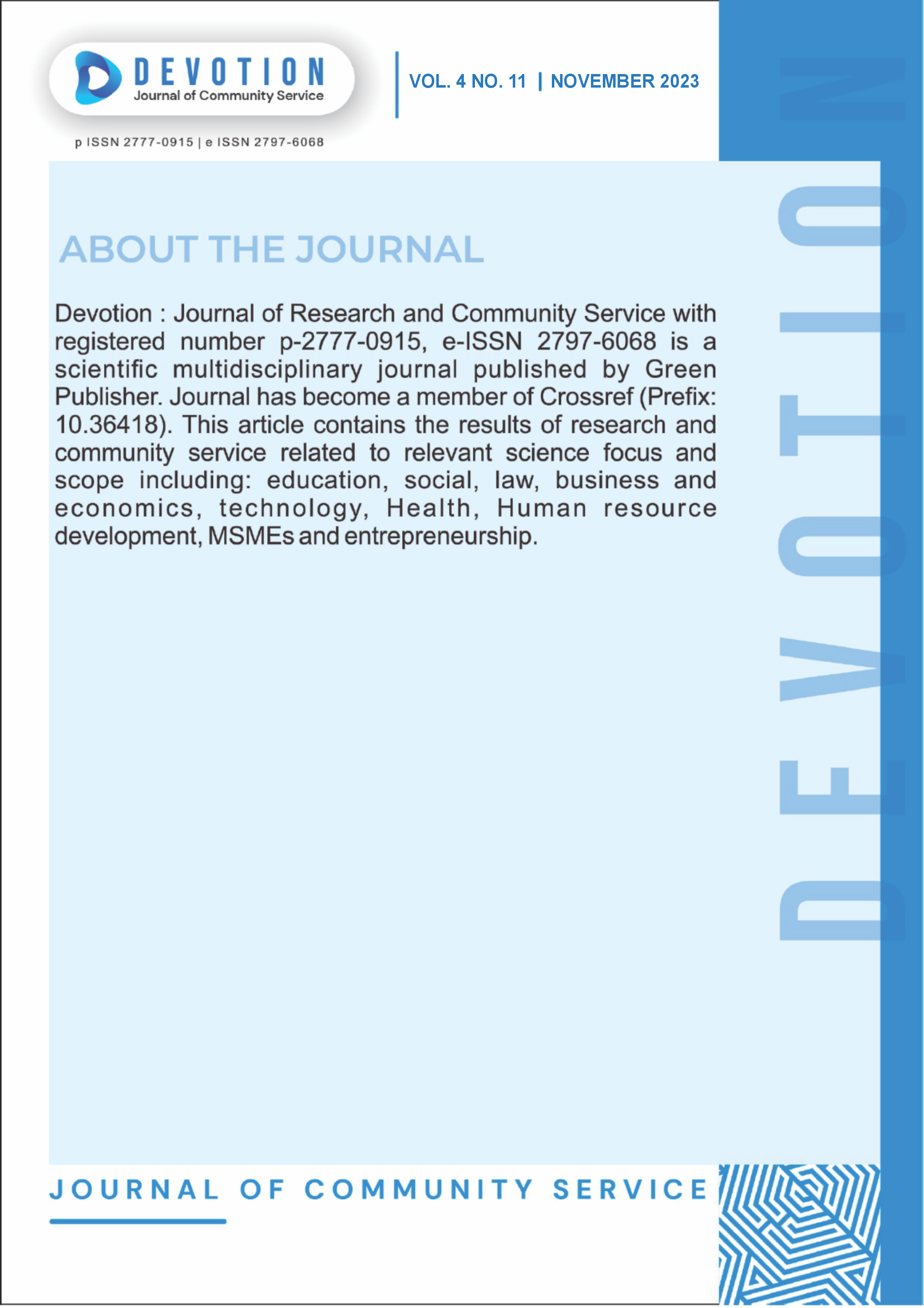Comparison of Intake of Moringa Leaf and Green Beans as an Alternative to Increase Hemoglobin Levels of Pregnant Women With Anemia
DOI:
https://doi.org/10.59188/devotion.v4i11.591Keywords:
Moringa Leaves, Green Beans, Hemoglobin, Pregnant Women, Systematic ReviewAbstract
Anemia is a "potential danger of mother and child". According to Riskedas (2018) anemia prevalence of pregnant women increased within 5 years from 37.1% to 48.9%. The biggest cause of anemia in pregnancy is iron deficiency anemia. One of the causes is lack of pregnant women get iron tablet (SF) less than 90 tablets and have not consume iron tablets correctly and continuously. Improving iron status can be done with non-pharmacological therapy, including the consumption of moringa and green beans. To compare the effectiveness of Moringa leaves and green beans on hemoglobin levels in pregnant women. Search for articles through the databases of Google Schoolar, Science Direct, PubMed, Elsevier (SCOPUS), Medline using Boolean operators (AND and OR). The research inclusion criteria were : Studies with randomized controlled trial (RCT) or quasi experiment design from 2015 to 2020, research participants were pregnant women, the intervention given was Moringa leaves or green beans. The results of the measurement of hemoglobin levels. Eighteen studies met the eligibility criteria and were analyzed. Moringa leaves were more effective in increasing the hemoglobin level of pregnant women with Standardized Mean Different (SMD) by 0.10 compared to green beans (SMD 0.10; CI 93% = -0.38 to 0.58; p<0.00001). Moringa leaves are more effective in increasing hemoglobin levels of pregnant women than green beans.
Published
Issue
Section
License
Copyright (c) 2023 Aulia Choirunnisa, Syarif Thaufik Hidayat, Supriyana

This work is licensed under a Creative Commons Attribution-ShareAlike 4.0 International License.
Authors who publish with this journal agree to the following terms:
- Authors retain copyright and grant the journal right of first publication with the work simultaneously licensed under a Creative Commons Attribution-ShareAlike 4.0 International. that allows others to share the work with an acknowledgement of the work's authorship and initial publication in this journal.
- Authors are able to enter into separate, additional contractual arrangements for the non-exclusive distribution of the journal's published version of the work (e.g., post it to an institutional repository or publish it in a book), with an acknowledgement of its initial publication in this journal.
- Authors are permitted and encouraged to post their work online (e.g., in institutional repositories or on their website) prior to and during the submission process, as it can lead to productive exchanges, as well as earlier and greater citation of published work.













